-
 Bitcoin
Bitcoin $117400
1.88% -
 Ethereum
Ethereum $3867
5.29% -
 XRP
XRP $3.081
2.58% -
 Tether USDt
Tether USDt $1.000
0.03% -
 BNB
BNB $779.7
0.92% -
 Solana
Solana $171.8
2.11% -
 USDC
USDC $0.9999
0.01% -
 Dogecoin
Dogecoin $0.2172
5.80% -
 TRON
TRON $0.3413
1.41% -
 Cardano
Cardano $0.7641
3.06% -
 Hyperliquid
Hyperliquid $39.69
3.62% -
 Sui
Sui $3.731
6.73% -
 Stellar
Stellar $0.4125
3.55% -
 Chainlink
Chainlink $18.23
8.86% -
 Bitcoin Cash
Bitcoin Cash $579.5
1.41% -
 Hedera
Hedera $0.2538
4.02% -
 Ethena USDe
Ethena USDe $1.001
0.00% -
 Avalanche
Avalanche $22.81
2.82% -
 Litecoin
Litecoin $121.7
1.10% -
 UNUS SED LEO
UNUS SED LEO $8.962
-0.33% -
 Toncoin
Toncoin $3.324
2.94% -
 Shiba Inu
Shiba Inu $0.00001263
2.30% -
 Uniswap
Uniswap $10.24
4.95% -
 Polkadot
Polkadot $3.780
3.09% -
 Dai
Dai $1.000
0.03% -
 Bitget Token
Bitget Token $4.432
1.64% -
 Cronos
Cronos $0.1493
3.87% -
 Monero
Monero $256.7
-9.05% -
 Pepe
Pepe $0.00001092
3.99% -
 Aave
Aave $279.0
6.11%
What is the forced liquidation mechanism of MEXC contracts? How to avoid forced liquidation?
Forced liquidation on MEXC occurs when a trader's margin level falls below the maintenance requirement, triggering the exchange to close the position at the current market price.
May 02, 2025 at 10:29 am
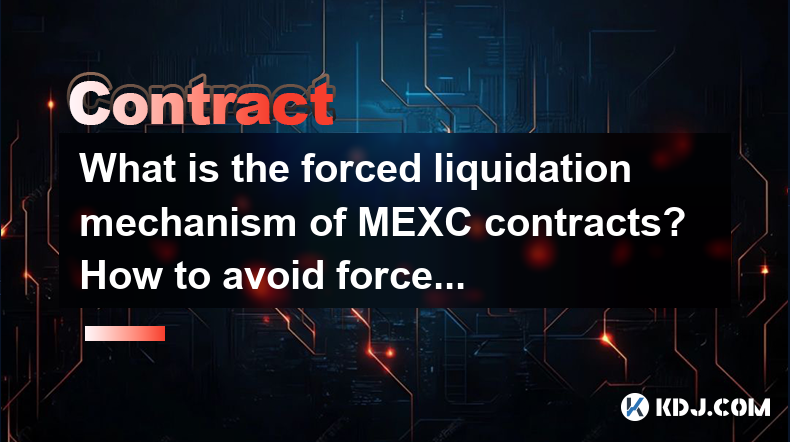
The forced liquidation mechanism of MEXC contracts is a critical aspect of trading on the platform, designed to protect both the trader and the exchange from excessive losses. Understanding this mechanism and learning how to avoid forced liquidation can significantly enhance your trading experience on MEXC. In this article, we will delve into the details of the forced liquidation mechanism and provide practical strategies to help you avoid it.
What is Forced Liquidation?
Forced liquidation is a process initiated by the exchange when a trader's position incurs losses that exceed their available margin. This mechanism is in place to ensure that the exchange can cover the losses and maintain the stability of the market. When a position is liquidated, the exchange closes the position at the current market price, and any remaining funds after covering the losses are returned to the trader's account.
How Does Forced Liquidation Work on MEXC?
On MEXC, the forced liquidation process is triggered when the margin level of a trader's account falls below the maintenance margin requirement. The margin level is calculated as the ratio of the account's equity to the total position's value. If this ratio drops below the specified threshold, the exchange will automatically initiate the liquidation process.
- Maintenance Margin Requirement: This is the minimum margin level that must be maintained to keep a position open. If the margin level falls below this requirement, the position is at risk of being liquidated.
- Liquidation Price: This is the price at which the position will be liquidated. It is calculated based on the entry price, the amount of leverage used, and the maintenance margin requirement.
Factors Leading to Forced Liquidation
Several factors can lead to forced liquidation on MEXC:
- High Leverage: Using high leverage increases the risk of liquidation because even small price movements can significantly impact the margin level.
- Volatile Markets: Rapid price fluctuations can quickly erode the margin, pushing the account towards liquidation.
- Insufficient Margin: Failing to maintain adequate margin in the account can lead to liquidation if the market moves against the position.
How to Avoid Forced Liquidation on MEXC
Avoiding forced liquidation requires careful management of your trading positions and a thorough understanding of the market. Here are some strategies to help you avoid liquidation:
Monitor Your Margin Level: Regularly check your margin level to ensure it remains above the maintenance margin requirement. You can do this by:
- Logging into your MEXC account.
- Navigating to the trading section.
- Checking the margin level displayed on your open positions.
Use Stop-Loss Orders: Implementing stop-loss orders can help limit your losses and prevent your position from reaching the liquidation price. To set a stop-loss order on MEXC:
- Go to the trading interface.
- Select the position you want to protect.
- Click on the "Stop-Loss" option.
- Enter the desired stop-loss price and confirm the order.
Adjust Leverage: Using lower leverage can reduce the risk of liquidation. To adjust your leverage on MEXC:
- Open the trading interface.
- Select the position you want to modify.
- Click on the "Leverage" option.
- Choose a lower leverage level and confirm the change.
Add More Margin: If you notice your margin level approaching the maintenance margin requirement, you can add more funds to your account to increase the margin level. To do this:
- Log into your MEXC account.
- Go to the "Deposit" section.
- Select the cryptocurrency you want to deposit.
- Follow the instructions to transfer funds to your account.
Stay Informed: Keeping up with market news and trends can help you anticipate price movements and adjust your positions accordingly. Use reliable sources of information and stay active in trading communities to stay informed.
Understanding Liquidation Price Calculation
The liquidation price is a crucial factor in avoiding forced liquidation. On MEXC, the liquidation price is calculated using the following formula:
[ \text{Liquidation Price} = \frac{\text{Entry Price} \times (1 \pm \text{Maintenance Margin Rate})}{(1 \pm \text{Maintenance Margin Rate}) \pm (\text{Leverage} \times \text{Maintenance Margin Rate})} ]
Where:
- Entry Price is the price at which you opened the position.
- Maintenance Margin Rate is the percentage of the position's value that must be maintained as margin.
- Leverage is the amount of leverage used for the position.
Understanding this formula can help you calculate the liquidation price for your positions and take appropriate actions to avoid liquidation.
Practical Example of Forced Liquidation
Let's consider a practical example to illustrate how forced liquidation works on MEXC:
Suppose you open a long position on BTC/USDT with an entry price of $30,000, using 10x leverage. The maintenance margin rate is set at 0.5%. Using the liquidation price formula, we can calculate the liquidation price as follows:
[ \text{Liquidation Price} = \frac{30,000 \times (1 + 0.005)}{(1 + 0.005) + (10 \times 0.005)} ]
[ \text{Liquidation Price} = \frac{30,150}{1.005 + 0.05} ]
[ \text{Liquidation Price} = \frac{30,150}{1.055} ]
[ \text{Liquidation Price} \approx 28,578.20 ]
In this example, if the price of BTC/USDT falls to $28,578.20, your position will be liquidated. To avoid this, you can monitor the price closely, add more margin, or adjust your leverage.
Frequently Asked Questions
Q: Can I reopen a position after it has been liquidated?
A: Yes, you can reopen a position after it has been liquidated. However, you will need to ensure that you have sufficient funds in your account to cover the new position's margin requirements.
Q: Does MEXC charge any fees for forced liquidation?
A: MEXC may charge a liquidation fee to cover the costs associated with the liquidation process. The specific fee structure can be found in the MEXC fee schedule.
Q: How can I check my current margin level on MEXC?
A: To check your current margin level on MEXC, log into your account, navigate to the trading section, and look at the margin level displayed on your open positions.
Q: Is there a way to receive notifications before my position is liquidated?
A: Yes, MEXC offers notification settings that can alert you when your margin level approaches the maintenance margin requirement. You can set these up in the account settings section of the platform.
Disclaimer:info@kdj.com
The information provided is not trading advice. kdj.com does not assume any responsibility for any investments made based on the information provided in this article. Cryptocurrencies are highly volatile and it is highly recommended that you invest with caution after thorough research!
If you believe that the content used on this website infringes your copyright, please contact us immediately (info@kdj.com) and we will delete it promptly.
- Pi Coin's dApp and AI Potential: Building a Decentralized Future
- 2025-08-08 02:30:12
- Ruvi AI Takes the Lead: Outshining Dogecoin on CoinMarketCap
- 2025-08-08 02:50:12
- Memecoins, Low-Cap Gems, and the Hunt for 10,000x Gains: What's Next?
- 2025-08-08 02:50:12
- Bitcoin, Greenidge, and Liquidity: Navigating the Crypto Currents in NYC
- 2025-08-08 02:30:12
- Crypto Phishing Alert: $3 Million USDT Loss Highlights DeFi Risks
- 2025-08-08 01:10:12
- Crypto Presale Mania: Is Punisher Coin the High ROI King?
- 2025-08-08 01:10:12
Related knowledge

What triggers a liquidation event on a Coinbase futures position?
Aug 08,2025 at 01:15am
Understanding Futures Contracts on CoinbaseFutures contracts on Coinbase allow traders to speculate on the future price of a cryptocurrency, such as B...
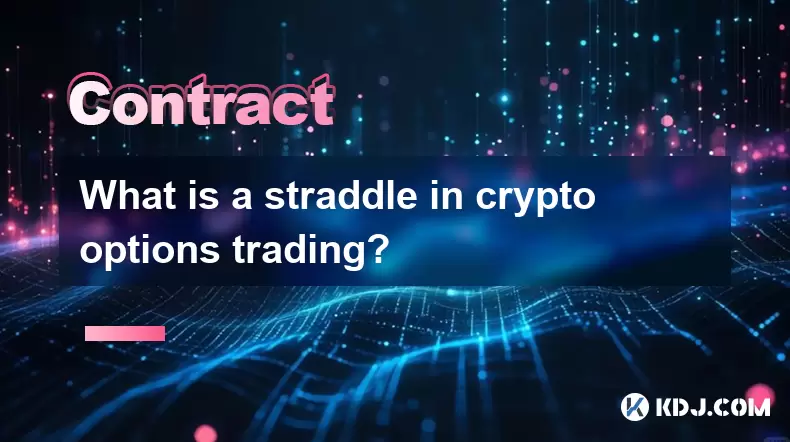
What is a straddle in crypto options trading?
Aug 07,2025 at 11:15pm
Understanding the Basics of a Straddle in Crypto OptionsA straddle is an options trading strategy used when a trader expects significant price movemen...
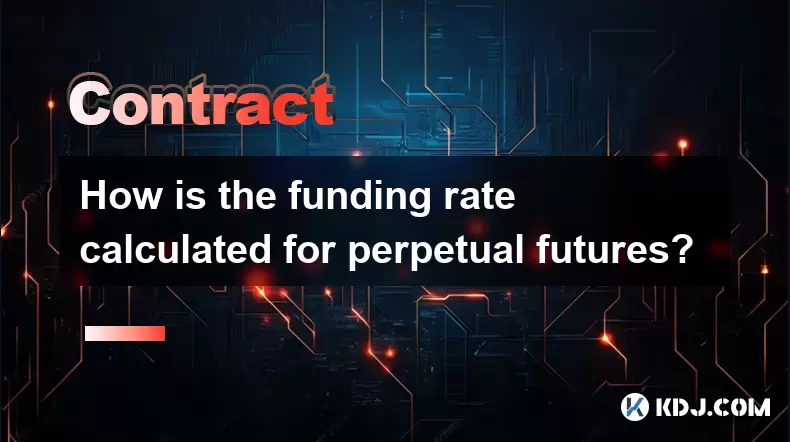
How is the funding rate calculated for perpetual futures?
Aug 07,2025 at 11:36pm
Understanding the Basics of Perpetual FuturesPerpetual futures are a type of derivative contract that does not have an expiration date, allowing trade...

What programming languages are used for smart contracts?
Aug 07,2025 at 06:07pm
Understanding Smart Contracts and Their Execution EnvironmentSmart contracts are self-executing programs deployed on blockchain networks that automati...
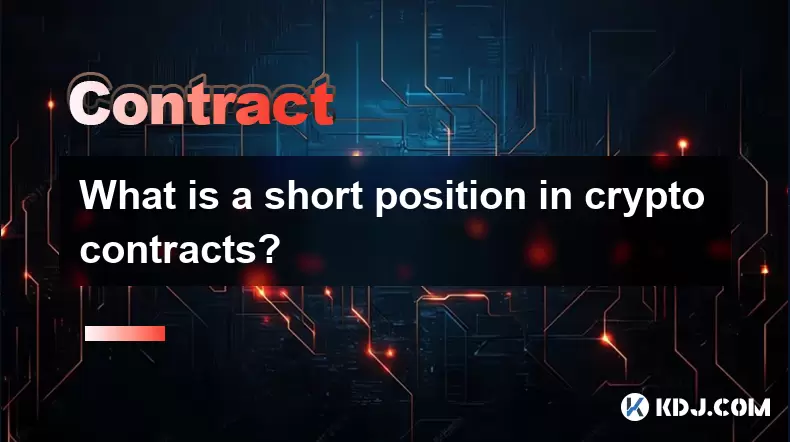
What is a short position in crypto contracts?
Aug 07,2025 at 11:42pm
Understanding the Concept of a Short Position in Crypto ContractsA short position in crypto contracts refers to a trading strategy where a trader prof...
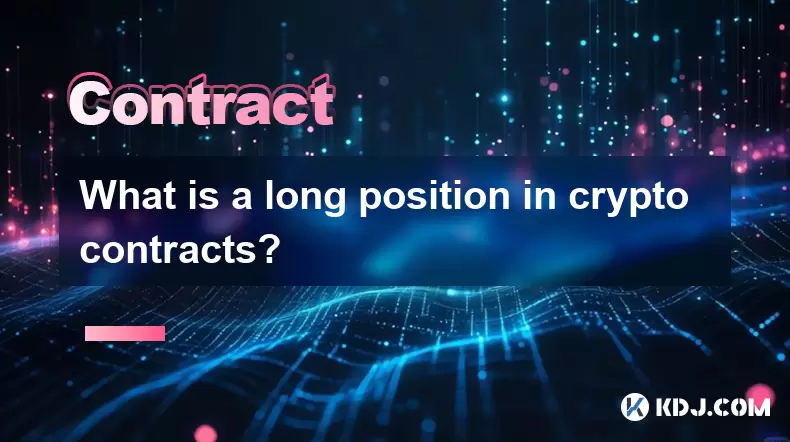
What is a long position in crypto contracts?
Aug 07,2025 at 06:29pm
Understanding the Concept of a Long Position in Crypto ContractsA long position in crypto contracts refers to a trading strategy where a trader buys a...

What triggers a liquidation event on a Coinbase futures position?
Aug 08,2025 at 01:15am
Understanding Futures Contracts on CoinbaseFutures contracts on Coinbase allow traders to speculate on the future price of a cryptocurrency, such as B...

What is a straddle in crypto options trading?
Aug 07,2025 at 11:15pm
Understanding the Basics of a Straddle in Crypto OptionsA straddle is an options trading strategy used when a trader expects significant price movemen...

How is the funding rate calculated for perpetual futures?
Aug 07,2025 at 11:36pm
Understanding the Basics of Perpetual FuturesPerpetual futures are a type of derivative contract that does not have an expiration date, allowing trade...

What programming languages are used for smart contracts?
Aug 07,2025 at 06:07pm
Understanding Smart Contracts and Their Execution EnvironmentSmart contracts are self-executing programs deployed on blockchain networks that automati...

What is a short position in crypto contracts?
Aug 07,2025 at 11:42pm
Understanding the Concept of a Short Position in Crypto ContractsA short position in crypto contracts refers to a trading strategy where a trader prof...

What is a long position in crypto contracts?
Aug 07,2025 at 06:29pm
Understanding the Concept of a Long Position in Crypto ContractsA long position in crypto contracts refers to a trading strategy where a trader buys a...
See all articles

























































































